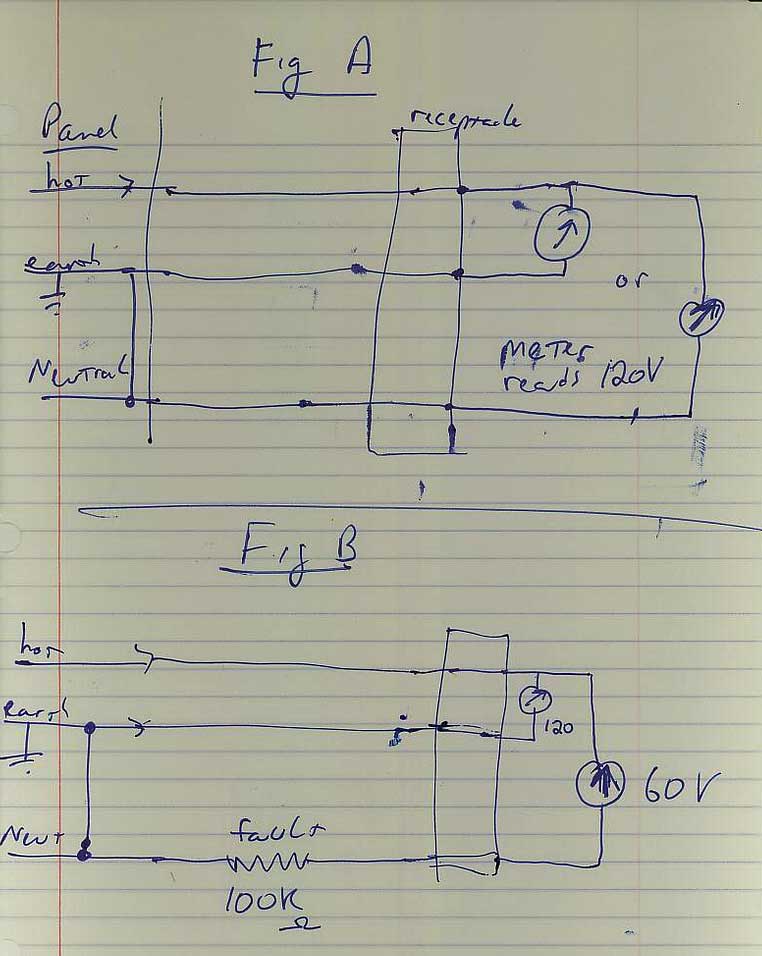Jimbo
Plumber
We get lots of questions to the effect that "I read 67 volts at point X and 53 volts at point Y" or something like that. How can that be??
Here are some simple little drawings that show how!

Figure A is the normal circuit. For practical purposes of this discussion, we assume Zero ohms at the receptacle, between bare and white. So a meter connected black to bare or black to white reads the same....120 volts.
Then we get to figure B. A bad connection somewhere in the neutral line between the receptacle and the main panel is represented by a resistance of 100,000 ohms.
Now, all meters cause some small current to flow in the circuit. That is how they work. Since current is flowing as a result of imposed voltage, then by definition and in actuality, the meter has some internal resistance. For this discussion, I have assumed a meter of 100,000 ohms internal resistance.
Simple Ohms's Law calculations show that a meter connected between hot and neutral will cause equal volatage....60 volts....to appear if measured directly across the "bad" 100 K ohms, and therefore the meter from black to white only reads 60 volts.
A little imagination can show you how if you put this " bad " 100K at different points in the circuit, different results can be seen. Add some load resistance....for example a light bulb or motor, and the possibilities for confusing readings are endless.
I always find it helpful to actually draw a circuit diagram like this ....including all possible loads......and from that infer why a funny reading has happened.
Hope this makes sense to you guys!
Here are some simple little drawings that show how!

Figure A is the normal circuit. For practical purposes of this discussion, we assume Zero ohms at the receptacle, between bare and white. So a meter connected black to bare or black to white reads the same....120 volts.
Then we get to figure B. A bad connection somewhere in the neutral line between the receptacle and the main panel is represented by a resistance of 100,000 ohms.
Now, all meters cause some small current to flow in the circuit. That is how they work. Since current is flowing as a result of imposed voltage, then by definition and in actuality, the meter has some internal resistance. For this discussion, I have assumed a meter of 100,000 ohms internal resistance.
Simple Ohms's Law calculations show that a meter connected between hot and neutral will cause equal volatage....60 volts....to appear if measured directly across the "bad" 100 K ohms, and therefore the meter from black to white only reads 60 volts.
A little imagination can show you how if you put this " bad " 100K at different points in the circuit, different results can be seen. Add some load resistance....for example a light bulb or motor, and the possibilities for confusing readings are endless.
I always find it helpful to actually draw a circuit diagram like this ....including all possible loads......and from that infer why a funny reading has happened.
Hope this makes sense to you guys!
Last edited by a moderator:
